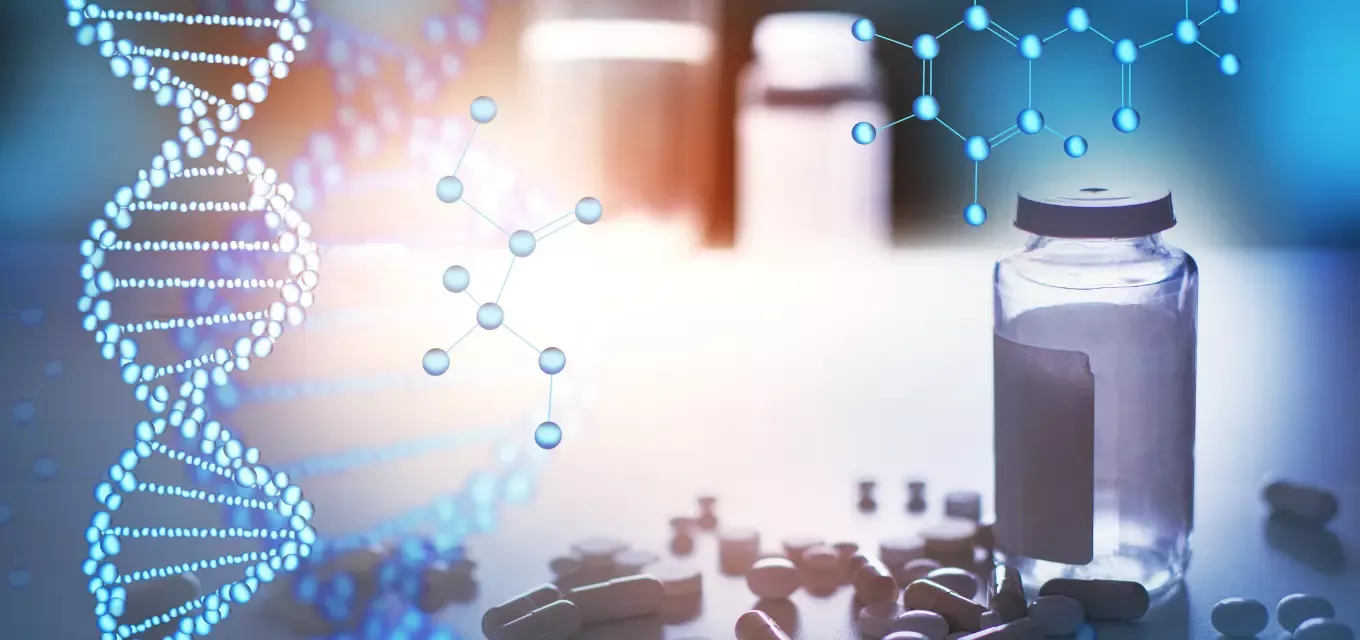What the HELM?! How to Unlock Communications for New Modalities of Drug Development
Science – and more specifically, drug development – doesn’t happen in a vacuum. Unless, of course, you are a scientist in space. (Shout out to our scientists in space!) Drug discovery R&D scientists building and testing target molecules need an effective and efficient way to model and communicate.
With the rise in complex biotherapeutics and macromolecular drugs to address new diseases and create better drugs, and with the growing number of companies developing both small and large molecule drugs, there's a need for a standardized notation system to represent, manage, and clearly communicate about these drugs. Conventional methods of modeling or representing chemical structures and sharing them are no longer adequate for the growing complexity and intricacy of new therapeutic modalities.
HELM Then and Now
HELM stands for Hierarchical Editing Language for Macromolecules. It is a standardized notation system that represents and manages complex biotherapeutics and macromolecular drugs.
HELM, designed in 2008, provides the informational mooring needed for drug discovery teams to be successful. The ability to communicate through a standardized universal language of molecular structures and modalities, such as antibody drug conjugates (ADC) RNA, and modified oligonucleotides, is critical for effective stakeholder collaborations, which lead to drug innovations.
Qalsody, a drug for ALS, is an antisense oligonucleotide against the SOD1 gene approved in 2023. This is an example of one of a growing number of new modality drugs that likely will need HELM-supported software to draw and communicate seamlessly between and throughout R&D teams, from Hit Identification and Lead Optimization teams including, Medicinal Chemists, Structural Biologists all the way to Preclinical Development Teams, Pharmacokinetics and Pharmacodynamics (PK/PD) scientists and Toxicologists.
New modality research contributing to the increasing number of drugs being approved in 2023 has been supported, generated, and guided by the ability to accurately develop, create, and clearly communicate about the natural and modified components of DNA, RNA, and amino acids.
This combined with the increase in conjugation drugs research, for example, antibody, oligonucleotides, peptides conjugated to small molecules, has increased collaboration between traditional biological and chemical teams that look at these candidates very differently, yet need a common language.
HELM supports generating these complex molecules (including chemicals) from larger biologics to small molecules to cell modalities—and everything in between—allowing all R&D teams to work together seamlessly and collaboratively while spending minimal time converting information or “translating it” into a format required for each scientist’s function.
This ability allows teams to address the question: What makes a candidate unique?
This question, of course, is ultimately up to your scientists and your organization to decide but is fundamentally rooted in how teams can define the drug candidate and its components – and clearly communicate about each part.
Benefits of HELM in Pharma R&D
- With advancements in drug design, HELM provides an accurate way to represent intricate molecular structures.
- Standardization across the industry: HELM provides a consistent platform for scientists globally, ensuring uniformity in macromolecule representation. Molecules and biologics are described in a way that doesn’t need translation. With no ambiguity, there is no miscommunication.
- Enhanced data integrity and management: HELM ensures that data remains consistent and reliable, which is critical to ensuring the safety of drugs that are developed.
- It is a flexible notation that can evolve and extend to other biopolymers.
How Revvity Signals Harnesses HELM's Capabilities
Revvity Signals harnesses the power and precision of our proprietary Hierarchical Editing Language for Macromolecules (HELM) software as a pivotal tool in drug discovery. All of its capabilities are incorporated into ChemDraw® within Signals One™ to ensure streamlined representation and efficient management of macromolecules.
With HELM powered ChemDraw at its core, Revvity Signals provides drug discovery teams with dedicated solutions for managing vast molecular databases, building and communicating macromolecules to increase the speed and efficiency of the Make-Test-Decide innovation cycle. Creating a foundation where both biologists and chemists can align their work to ensure data accuracy, consistency, and manageability is a trifecta for drug innovation and the safety of patients.
HELM & Its Potential for the Future
Collaboration among scientists and industries is no longer simply “nice to have.” It is an essential prerequisite to innovation. Today, a trained team of experts, collaborators, companies, and colleagues needs to quickly communicate across drug modalities effectively. HELM is a key component of this collaboration - supporting initiatives to accelerate innovations through seamless communication.
Contact us to help you revolutionize your macromolecular projects with HELM.

Zev Wisotsky, Ph.D.
Sr. Principal Marketing ManagerZev is a Sr. Principal Marketing Manager for Biologics in the Signals Suite. His scientific training and research background includes neuroscience, biochemistry, molecular biology, and drug discovery. He has spent 7+ years in software in go-to-market teams across industries with a heavy focus on biopharma/biotech R&D.
